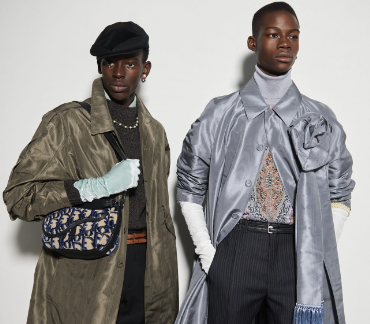The fashion industry is undergoing a digital transformation, and it’s changing the way we experience and consume fashion. The rise of digital fashion has been a trend in recent years, but it has accelerated in the wake of the COVID-19 pandemic, with virtual fashion shows and NFT fashion items taking over the industry.
Digital fashion is a term used to describe clothing and accessories that exist only in the digital space. These pieces can be designed and sold like physical garments, but they are not tangible. Instead, they exist as 3D models that can be rendered and animated to create lifelike images or videos. Digital fashion can be worn in virtual environments like video games, social media, or virtual reality experiences.
One of the most significant developments in the digital fashion world has been the rise of virtual fashion shows. With the pandemic preventing in-person fashion events, designers have turned to virtual platforms to showcase their collections. Virtual fashion shows are immersive experiences that allow viewers to interact with the garments in a 3D space. They can walk around the models, zoom in on details, and see the clothing from every angle. Virtual fashion shows also offer designers more creative freedom in terms of presentation and storytelling, as they can create their own worlds and environments.
The first virtual fashion week was held in Shanghai in 2018, and since then, they have become more common. In 2020, several fashion weeks, including London, Paris, and Milan, moved entirely online, featuring virtual fashion shows, digital showrooms, and interactive events. The success of these events has shown that virtual fashion shows can be just as impactful as physical ones.
Another trend in digital fashion is the creation of NFT (Non-Fungible Token) fashion items. NFTs are a type of digital asset that uses blockchain technology to verify ownership and authenticity. In the fashion world, NFTs can be used to create unique, one-of-a-kind items that exist only in the digital space. These items can range from 3D rendered garments to digital accessories or even entire virtual wardrobes.
NFT fashion items are an exciting development because they allow designers to create exclusive pieces that cannot be replicated. They also offer a new way for fashion lovers to express themselves and own a piece of the industry. NFT fashion items can be bought, sold, and traded like physical garments, but they are not subject to the same limitations of production and distribution.
The rise of digital fashion has the potential to revolutionize the fashion industry. It offers new opportunities for creativity and innovation, as designers can experiment with new materials, shapes, and textures that are impossible in the physical world. It also has the potential to reduce waste and environmental impact, as digital fashion does not require any physical materials or production processes.
However, digital fashion also raises important questions about the future of the industry. It challenges traditional notions of ownership, as the lines between physical and digital items become blurred. It also raises concerns about the impact of technology on the fashion industry and the wider culture.
In conclusion, the rise of digital fashion is a significant trend in the industry, with virtual fashion shows and NFT fashion items taking over the spotlight. It’s changing the way we experience and consume fashion, offering new opportunities for creativity, innovation, and sustainability. However, it also raises important questions about the future of the industry and its relationship with technology. It’s an exciting time for fashion, and only time will tell where the digital revolution will take us.










